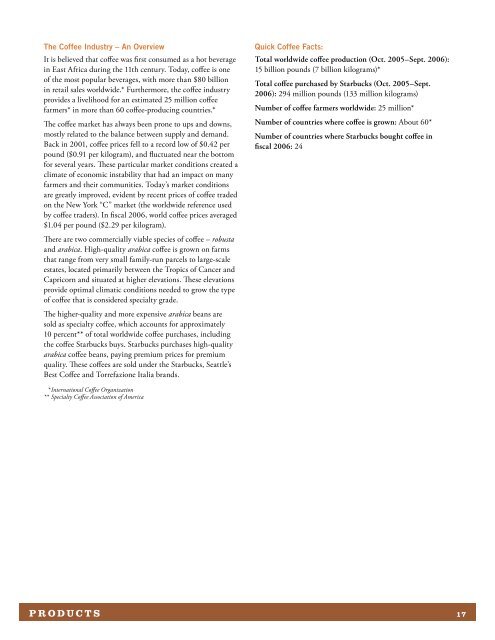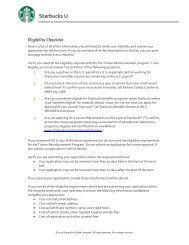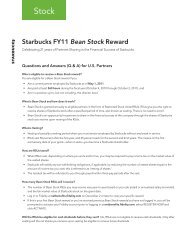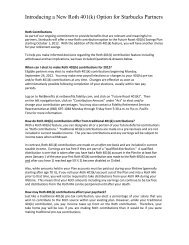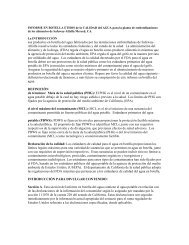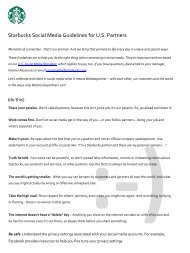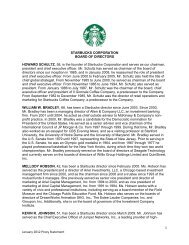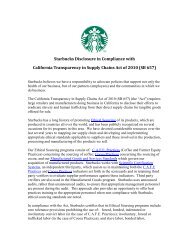Starbucks Corporation CORPORATE SOCIAL RESPONSIBILITY ...
Starbucks Corporation CORPORATE SOCIAL RESPONSIBILITY ...
Starbucks Corporation CORPORATE SOCIAL RESPONSIBILITY ...
You also want an ePaper? Increase the reach of your titles
YUMPU automatically turns print PDFs into web optimized ePapers that Google loves.
The Coffee Industry – An Overview<br />
It is believed that coffee was first consumed as a hot beverage<br />
in East Africa during the 11th century. Today, coffee is one<br />
of the most popular beverages, with more than $80 billion<br />
in retail sales worldwide.* Furthermore, the coffee industry<br />
provides a livelihood for an estimated 25 million coffee<br />
farmers* in more than 60 coffee-producing countries.*<br />
The coffee market has always been prone to ups and downs,<br />
mostly related to the balance between supply and demand.<br />
Back in 2001, coffee prices fell to a record low of $0.42 per<br />
pound ($0.91 per kilogram), and fluctuated near the bottom<br />
for several years. These particular market conditions created a<br />
climate of economic instability that had an impact on many<br />
farmers and their communities. Today’s market conditions<br />
are greatly improved, evident by recent prices of coffee traded<br />
on the New York “C” market (the worldwide reference used<br />
by coffee traders). In fiscal 2006, world coffee prices averaged<br />
$1.04 per pound ($2.29 per kilogram).<br />
There are two commercially viable species of coffee – robusta<br />
and arabica. High-quality arabica coffee is grown on farms<br />
that range from very small family-run parcels to large-scale<br />
estates, located primarily between the Tropics of Cancer and<br />
Capricorn and situated at higher elevations. These elevations<br />
provide optimal climatic conditions needed to grow the type<br />
of coffee that is considered specialty grade.<br />
The higher-quality and more expensive arabica beans are<br />
sold as specialty coffee, which accounts for approximately<br />
10 percent** of total worldwide coffee purchases, including<br />
the coffee <strong>Starbucks</strong> buys. <strong>Starbucks</strong> purchases high-quality<br />
arabica coffee beans, paying premium prices for premium<br />
quality. These coffees are sold under the <strong>Starbucks</strong>, Seattle’s<br />
Best Coffee and Torrefazione Italia brands.<br />
* International Coffee Organization<br />
** Specialty Coffee Association of America<br />
P R O D U C T S<br />
Quick Coffee Facts:<br />
Total worldwide coffee production (Oct. 2005–Sept. 2006):<br />
15 billion pounds (7 billion kilograms)*<br />
Total coffee purchased by <strong>Starbucks</strong> (Oct. 2005–Sept.<br />
2006): 294 million pounds (133 million kilograms)<br />
Number of coffee farmers worldwide: 25 million*<br />
Number of countries where coffee is grown: About 60*<br />
Number of countries where <strong>Starbucks</strong> bought coffee in<br />
fiscal 2006: 24


